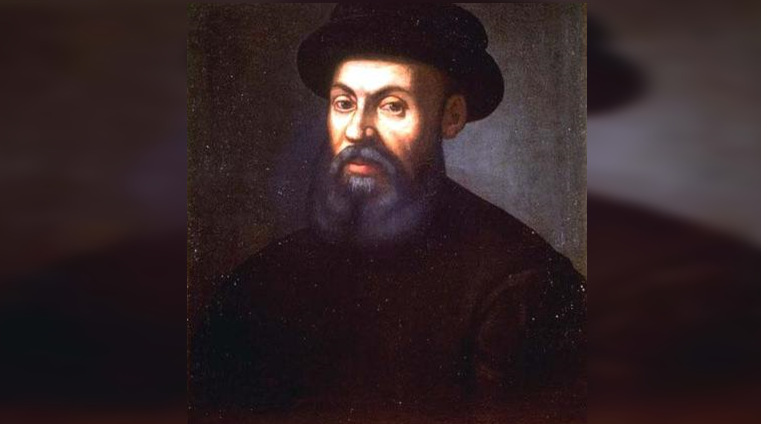Proem
When Antonio Pigafetta, the chronicler of the Ferdinand Magellan expedition, came to Cebu, he was able to record some 160 Sugbuanon words with their equivalents in the Italian language.
Many of these words are still in use today and having the same meaning compared to 500 years ago. Some have changed slightly and some are no longer in use.
What is revealing is that there are words for things or concepts that we thought did not yet exist during the arrival of Magellan in 1521.
We know that Pigafetta did not speak Bisisayâ. What he did was to ask his informants by pointing to the objects that he want to know the Bisayan terms. He must have had a good informant because the names of the private parts of the body is included in the records.
Words we thought did not exist
The present day Sugboanon word for dog is “irô”. Almost everybody will say that it came from the word perro that is the Spanish word for dog.
According to Antonio Pigafetta the word for dog in Sinugboanon are “aian” and “ydo”. The word aian and ydo are just Pifagetta’s way of spelling today’s “ayam” and “idô”.
Today there are still oldtimers and members of LUDABI that uses “ayam” or “ajam” to mean dog. The most common word for dog is “irô”. However, in the town of Cortes, Bohol and its neighboring towns the people still pronounced it as “idô”.
Since pigafetta recorded the word “Ydo” it indicated that “irô” or “idô” did not come from the Spanish word perro. It was already here before the arrival of the Spaniards.
Another unusual word is the word “Alupalan”. It was recorded by Pigafetta in Italian as “All mal de Sto. Job” and translated by Blair and Robertson as “the disease of St. Job”. What is this disease? Today’s medical dictionaries call it as “Job’s syndrome”. It is a skin disease with manifestation similar to syphilis.
In Spanish – Bisayan dictionaries made by the Spanish priests, they already made the word “alupalan” to be equivalent to syphilis. The other similar venereal disease known as gonorrhoea has the Bisayan term “tabukáw”. This word was not recorded by Pigafetta because it is said to have originated in Mexico and was not yet prevalent in Europe.
The question is, if alupalan or syphilis was already here in the Visayas in 1521 or 500 years ago, who brought it here? It is a clear indication that the Bisayan already travelled to faraway places before the arrival of the Spaniards.
Counting words
Pigafetta only recorded the counting words from one to ten. However, it is enough to indicate that our counting words are still the same from 500 years ago.
Pigafetta recorded in Italian spelling our counting numbers: uzza (usa = one), dua (duha = two), tolo (tulo = three), upat (upat = four), lima (lima = five), onom (unom = six), pitto (pitó = seven) gualu (walo = eight), ciam (siyam = nine), polo (napulo = ten).
Words that slightly change
Some words are recorded by Pigafetta differently. There could be many reasons why they are slightly different from today’s words. It could be that Pigafetta was not understood. It could be that his Italian or Spanish letters have no equivalent to the Bisayan sounds that he heard. It could be that the informant was not telling the correct words.
Pigafetta recorded “lac” for man. Maybe that was how he spelled the sound “laki”. He recorded the word “parapaon” for woman. I have not encountered this word in my research for my Bisaya-English dictionary.
Pigafetta recorded the word “beni” for young woman. Strangely enough we use this word, spelled as binibini to mean a formal term for young woman. It is only used usually in balak. Our usual word now is dalága or gining. We abandoned the use of binibini because we thought that it is a Tagalog word.
The recorded words pilac (pilok) for eyelid can be attributed to wrong pointing of the object. Pilok is actually eyelashes while eyelid is alubaw or tabuntábon.
The record chilei (kilay) for eyebrow can be attributed to the absence of the letter “K” in the Spanish or Italian alphabet.
The record olol for lips is not found in old dictionaries (1618) or new dictionaries. There is “Ol-ol” but it means pain.
The record liogh (liog) for throat can be attributed to wrong interpretation of the sign. The signal can only indicate the neck and not what is inside the neck. Liog means neck while throat is either tiládok or tutúnlan.
The record molanghai for pulse is not found in old dictionaries. The similar sounding word puwangay means the base of the fingers.
The words balaonan (bulawan = gold), pilla (pilak = silver) are still recognizable. However, butan for iron instead of puthaw and concach for brass instead of kalunggákì is difficult to recognize.
The animals bahui (baboy = pig), candin (kanding = goat), monach (manok = chicken) are still recognizable.
Comment
Of all the languages in the Philippines, the Sinugbanon possess the distinct honor or having a record of its words 500 years ago as recorded by Antonio Pigafetta.
Even though some words are already different in meaning and context, majority of the words recorded by Pigafetta are still found in today’s Binisayâ.

